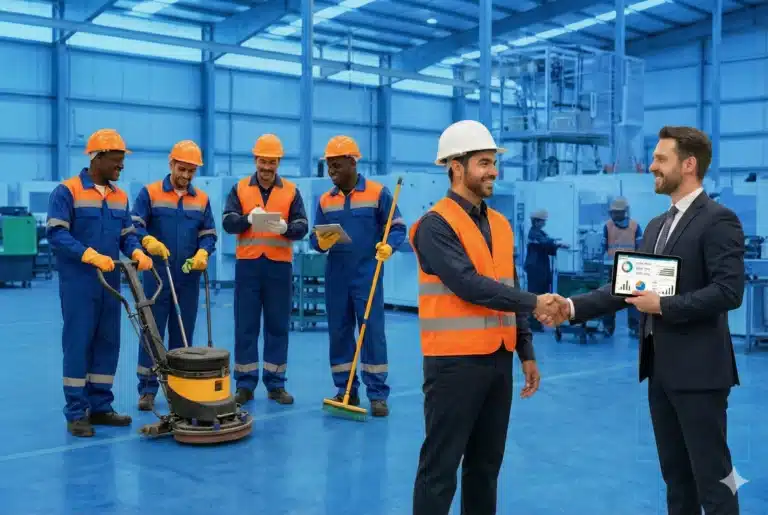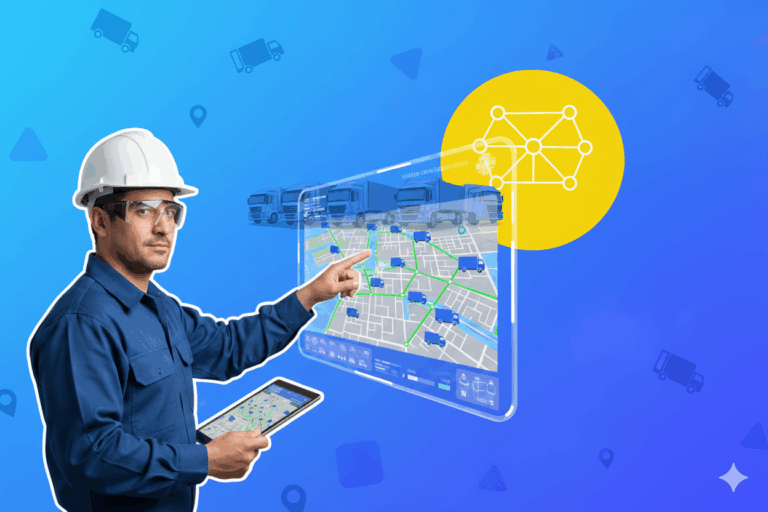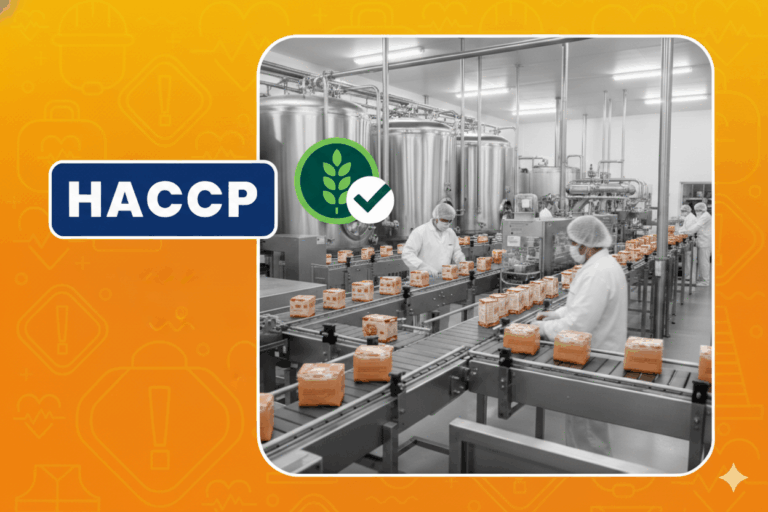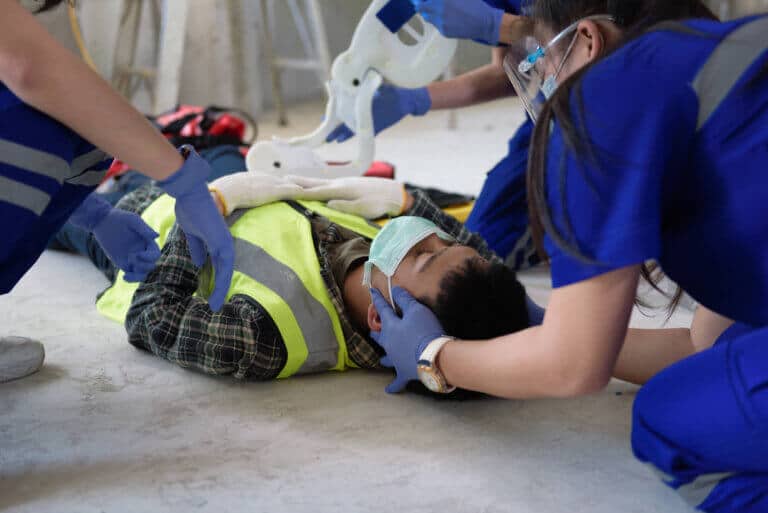Work at heights carries a high risk of serious and even fatal accidents. This requires that both companies and workers use any kind of fall arrester harness responsibly and efficiently. This not only implies choosing the most appropriate implements for each task, but also practicing a constant and thorough maintenance of them.
Falls from height cause a high number of occupational accidents with serious, and even fatal, consequences throughout the world. In fact, a recent report by the Chilean Labor Directorate identifies them as the second cause of disabling injuries and death among the workforce in our country.
This scenario of permanent high risk translates into the urgent need for the professionals that perform this type of work to use specialized personal protection equipment, which prevents falls and, at the same time, minimizes the damage in the event that an accident occurs.
This equipment, called “fall arrest systems”, includes all those components used by the worker in order his body would be restrained or retained in the event of a possible fall, or else, would be suspended from a safety anchor, without suffering any damage.
To accomplish this task efficiently, every fall arrest system must consist of three components: an anchorage device, a connection subsystem (generally steel cables) and a fall arrest harness.
Harness, essential component
From a technical point of view, the fall arrest harness is any safety device that fits over the worker’s body, in order to hold or retain him in the event of a fall.
It basically consists of a system of straps designed to support the body, combined with other various hooking and adjustment elements, which allow harness to be attached to any anchor point, by means of a connection line.
The safety elements market today offers various types of harnesses, specifically designed for different types of work at height. For this reason, in order for this equipment to fulfill its role efficiently, we must choose the most appropriate type for each task carried out (forestry tasks, lighting maintenance, window cleaning or high-rise construction, for example).
According to this characteristic it is possible identify four types of harnesses:
Restraint belts (EN 354, EN 358)
They are pressure devices that surround the worker’s body at the waist. They have the double function of preventing the user from moving to a point where there has a risk of falling, and keeping him in his correct workplace.
Seat harness (EN 354, EN 358, EN 12841C)
They are made up of a belt plus an attachment point and two supports that surround each worker’s leg. In this way, they allow the worker’s body to be supported in a sitting position. Therefore, they perform the same functions as seat belts.
Fall arrest harness (EN 360, EN 355, EN 353.1/2)
Their main function is to arrest the fall. So, they must incorporate an attachment point that guarantees the connection of the harness with the fall arrest subsystem and the anchorage. Depending the location of this attachment point, the harness type can be dorsal, sternal, ventral or positioning.
Integral harness (EN 354, EN 358, EN 12841 A/B/C, EN 360, EN 355, EN 353.1/2)
They are structured on the basis of the union of a safety belt, with a fall arrest harness and a seat harness, and are generally used in vertical work (such as high-rise buildings).
Associated components
As we explained above, in order to harnesses perform its function efficiently, they must be combined with two other essential components.
Connection subsystems
These connect the anchor point with the safety harness and can be of two types: energy absorbers and fall arrest devices themselves.
Anchor points
These are those elements where we hook the connection subsystem. The most common are single anchor points and lifelines, also known as “anchor lines.” These lines can be classified, in turn, into vertical and horizontal, according to the direction of movement that they allow the worker, once they are installed.
Maintenance, essential point
Beyond the quality of the materials used to manufacture a fall arrest harness, or the characteristics that it must have according to the work performed, it is also essential to educate and train workers regarding the risks involved in working at height.
This implies teaching them the vital importance of keeping this equipment permanently in good condition. A task that is the responsibility of both the employer and the company’s security teams, as well as the worker himself.
In this regard, it is convenient that the company and the professionals in charge of carrying out the respective tasks of inspection and preventive maintenance of this equipment, have an electronic checklist system, or app, through which they can control the multiple phases of the inspection and verify the security and fully operation of the equipment.
In this way, we can guarantee a more efficient control, which translates into a significant optimization of the safety and working conditions of personnel who must perform tasks at height.
Some practical indications of interest which we can include in these digital checklists, in order to control all the possible variables of use, maintenance and care of the harnesses, are the following:
- The anchorage device and personal fall protection equipment must be able to resist all the forces that originate in arresting a person’s fall, including the fall itself and the body weight of the worker, added to their clothing and other equipment that he can carry at that time.
- Harness anchorage points must always be secure and easily accessible.
- Protective equipment should not be interchanged between several workers, because optimal protection is achieved by tailoring the size and fit individually for each person.
- Any adjustments must be made in accordance with the manufacturer’s instructions, in order to achieve maximum effectiveness of the system.
- To determine the maximum useful life of each piece of equipment, it is necessary to consider the characteristics of each one of them, as well as the materials with which they were made, the conditions of the work itself and its environment, as well as the characteristics of the place destined for its use and storage.
- All fall arrest harnesses, as well as anchor lines, must be stored hanging, in a dry and cool place, and away from natural or artificial heat sources (sun, ovens or boilers, among others).
- Harnesses must be protected from contact with aggressive or corrosive substances, such as acids, alkalis, welding fluids, oils, cutting surfaces or rough and sharp wall edges.
- The transport of each of these pieces of equipment, harnesses or holding lines, must always be done in its corresponding suitcase or container.
- In the event of detecting any signs of wear in the fibers of the harness, as well as breaks or flaws in the adjustment systems, the entire equipment must be removed from service immediately and replaced by a new one or another in good condition.
Other important considerations
Harnesses made of textile materials can be washed. In that case, it is recommended to always use a washing machine and a detergent for delicate fabrics. In addition, they must be wrapped in a bag to avoid possible damage due to friction with the metal surfaces of the washing equipment.
Besides, the washing temperature should not be higher than 30°C, since above this temperature the structure of the artificial fibers (especially polyester or polyamide) of the harness straps can be damaged.
In addition, it must be remembered that the textile components of the equipment made of synthetic fiber can show premature wear, especially if they are subjected to the effects of intense ultraviolet radiation, or to the action of extreme climatic and environmental conditions.
Likewise, for more successful maintenance, the worker must be permanently participating in constant training courses where he learns to take care of his personal equipment. This will help him avoid situations that cause damage or wear to the harness, as well as recognize any signs of damage, abrasion or malfunction.
Download the DataScope app and start now!
DataScope is the ideal tool to eliminate paper use, save time, and efficiently collect data from the field. It allows companies to streamline, organize and evaluate field work thanks to its online forms, which provide indicators in real time, 100% adaptable to any area.
With DataScope, your team can answer custom mobile forms from their phones or tablets, online or offline, through the app.






